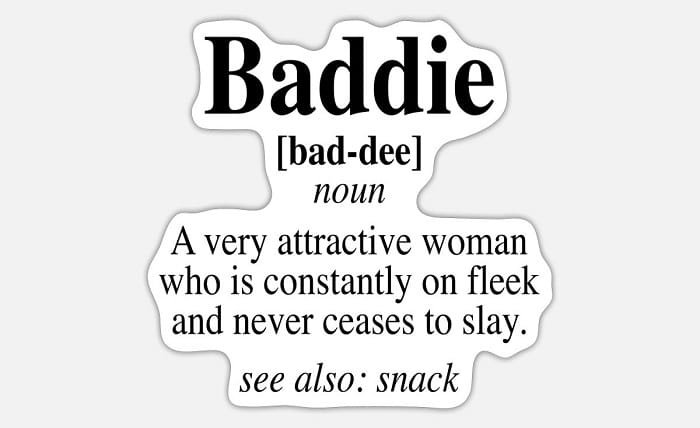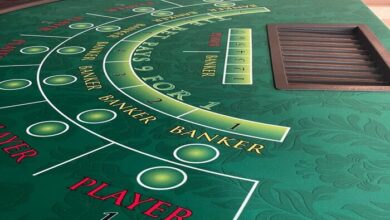he Meaning of Baddies: Exploring the Popular Slang and Its Cultural Significance

In recent years, the term “baddies” has become a prominent part of modern slang. Whether used to describe characters in movies, individuals on social media, or a certain type of aesthetic, “baddies” has gained significant traction. But what exactly does “baddies” mean, and where did it come from? In this blog, we’ll break down the meaning of “baddies,” how it’s used in different contexts, and explore the term’s cultural relevance. By the end of this post, you’ll have a clear understanding of why “baddies” is so widely used today.
What Does “Baddies” Mean?
The most straightforward meaning of “baddies” refers to individuals, particularly women, who are considered attractive, confident, and often exude a bold, empowering presence. In its most positive usage, “baddies” describes someone who is not only physically appealing but also carries a certain level of charisma and confidence that draws people in.
In its more traditional sense, “baddies” is a plural form of the word “bad,” often used in relation to characters in movies, shows, or stories who embody a rebellious or villainous role. For example, in superhero movies, the “baddies” are the villains or antagonists. However, over time, the term has evolved to include a broader range of meanings and uses, often being reclaimed in popular culture with a more empowering connotation.
Origins and Evolution of the Term “Baddies”
The term “baddies” has its roots in the traditional use of “bad” or “bad girl” in pop culture, particularly in hip-hop and rap music. Historically, the term “bad” was often used to describe women who were seen as fierce or untouchable, often depicted in music videos and songs as both independent and rebellious.
By the 2000s, the term began to shift from merely describing rebellious or villainous characters to referring to women who embraced their boldness and confidence. This shift can be traced to the increasing representation of strong, empowered women in the media. Songs, movies, and social media platforms all played a significant role in popularizing the modern usage of the term.
Through platforms like Instagram and TikTok, the term “baddies” took on a more contemporary and inclusive meaning. It was used to celebrate women of all shapes, sizes, and backgrounds, as long as they embodied confidence and self-assurance. In this modern context, “baddies” have come to represent women who are unapologetically themselves.
How “Baddies” is Used in Popular Culture
In popular culture, “baddies” is used in various ways, and its meaning can differ depending on the context. Let’s break down how the term is applied across different aspects of culture:
- Social Media:
On platforms like Instagram, the term “baddies” is frequently used to describe women who have a strong, captivating presence. Many influencers, celebrities, and models are often referred to as “baddies” because of their confident demeanor and stunning looks. The hashtag #Baddie has become synonymous with empowering women who embrace their beauty and confidence. - Movies and TV Shows:
In the entertainment industry, “baddies” are typically the antagonists, as mentioned earlier. These characters are often portrayed as the villains of the story, making life difficult for the protagonist. However, the usage of “baddies” in pop culture has also evolved to describe strong, independent women who defy traditional gender roles. - Music:
Hip-hop and rap music have long embraced the term “baddies,” using it to describe women who embody power, independence, and beauty. Artists like Megan Thee Stallion and Cardi B frequently use the term to describe themselves and their fans, portraying “baddies” as women who are confident, unapologetically bold, and in control of their own lives. - Fashion and Beauty:
The term “baddies” is often associated with fashion and beauty trends. Women who are considered “baddies” often follow specific beauty standards, such as flawless makeup, stylish clothing, and a bold, trendy look. This aesthetic has become a subculture, with women sharing their fashion and beauty tips on social media under the hashtag #Baddie.
“Baddies” in the Context of Empowerment
Over time, the meaning of “baddies” has shifted toward a more empowering connotation. While the term was once used to describe rebellious or villainous figures, it now celebrates women who are confident, strong, and unapologetic about who they are. The idea behind a “baddie” is no longer solely about physical appearance; it’s about owning your narrative and embracing your individuality.
The empowerment aspect of “baddies” also ties into the idea of women breaking free from societal expectations. Traditionally, women were often expected to be demure and passive, but “baddies” reject these stereotypes, asserting their own sense of identity and control. This is why the term has resonated so strongly with many women today, as it offers a way to celebrate confidence and independence.
The impact of this movement is visible not only in the way women present themselves online but also in how they engage in various industries. From business to entertainment, the “baddie” mindset has become a symbol of self-assurance, ambition, and empowerment.
The “Baddies” Aesthetic and Its Influence on Fashion
One of the most recognizable aspects of the “baddies” culture is the aesthetic that accompanies it. This aesthetic is a blend of bold fashion choices, flawless makeup, and striking self-presentation.
The “baddie” aesthetic includes sharp and defined makeup, often involving contouring, dramatic eyeliner, and bold lips. Hairstyles range from long, sleek, and straight to voluminous curls or even bold colors. Clothing choices include bodycon dresses, crop tops, high-waisted jeans, and accessories that add flair to the overall look. The goal is to showcase confidence, power, and beauty in every aspect of one’s appearance.
Social media influencers, beauty bloggers, and fashion icons have played a significant role in popularizing the “baddies” aesthetic, with many young women embracing it as a way to express their individuality and assertiveness. This trend has also influenced mainstream fashion, with brands releasing lines that cater to the bold and confident vibe associated with the “baddies” aesthetic.
Criticism and Controversy Surrounding “Baddies”
Despite the empowering nature of the “baddies” concept, it has also faced criticism and controversy. Some critics argue that the term can reinforce superficial beauty standards that prioritize appearance over substance. In an era of body positivity and inclusivity, some feel that the emphasis on looking a certain way to be considered a “baddie” can be harmful, particularly for women who do not fit these standards.
Furthermore, the “baddies” culture is sometimes seen as overly materialistic, with its focus on luxury brands, expensive makeup, and high-end fashion. Critics argue that this can create unrealistic expectations and put undue pressure on women to conform to a certain image of success and beauty.
While the “baddies” movement can be empowering for many, it’s essential to be mindful of the potential for harmful beauty ideals to take center stage. Advocates for diversity and inclusivity in beauty standards are pushing for a broader definition of what it means to be a “baddie,” one that celebrates all body types, skin tones, and personal styles.
How to Embrace the “Baddies” Mindset
If you’re interested in adopting the “baddies” mindset, it’s important to remember that it’s about more than just looks. While the physical aesthetic is part of the appeal, the true essence of being a “baddie” lies in confidence, independence, and self-expression. Here’s how you can embrace the “baddies” mindset:
- Own Your Confidence:
A true “baddie” walks into any room knowing their worth and owning their presence. Confidence is key, so make sure you embrace your individuality and celebrate your unique qualities. - Break Free from Societal Expectations:
Reject the pressures placed on you by society to conform to traditional norms. Be bold in your decisions, your style, and your actions. - Prioritize Self-Care:
Part of being a “baddie” is taking care of yourself, both physically and mentally. Whether it’s through fitness, skincare, or self-reflection, make sure you nurture your well-being. - Be Independent:
A “baddie” isn’t reliant on anyone else for validation. Cultivate your independence, pursue your goals, and make decisions that align with your values and aspirations. - Celebrate Diversity and Inclusivity:
Embrace the diversity of what it means to be a “baddie.” This includes accepting and celebrating all body types, skin tones, and personal styles. The true spirit of being a “baddie” is about empowerment for everyone.
Conclusion
The meaning of “baddies” has evolved significantly over the years, from a term used to describe villains in movies to a symbol of empowerment, confidence, and self-expression for women worldwide. Whether used in pop culture, fashion, or social media, the term has become synonymous with boldness and independence. While the “baddies” aesthetic may be associated with physical beauty, the true essence of the term lies in embracing who you are, unapologetically and with confidence. The “baddies” mindset offers a powerful reminder to break free from societal expectations and be the best version of yourself.
FAQs
- What does “baddies” mean?
“Baddies” refers to women who are confident, bold, and often exude beauty and empowerment. It can also refer to villains in movies or stories. - Where did the term “baddies” originate?
The term evolved from the use of “bad” or “bad girl” in hip-hop culture, eventually being adopted to describe empowered and confident women in modern times. - What is the “baddies” aesthetic?
The “baddies” aesthetic is a bold, fashionable look that includes sharp makeup, stylish clothing, and confident self-presentation. - Is the term “baddies” empowering?
Yes, the term is often used to celebrate women who embrace their confidence, independence, and individuality. - Can anyone be a “baddie”?
Yes! The true meaning of being a “baddie” is about owning your confidence and embracing your unique qualities, regardless of appearance.




